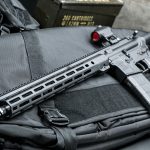For the first time in 20 years, overall sales in the fitness equipment industry took a ‘hit,’ but it was not due to any lack of interest in the fitness/exercise category. According to the Sporting Goods Manufacturers Association’s (SGMA) recent analysis of Tracking the Fitness Movement (2009 edition), the major reason for the dip in sales of fitness and exercise equipment can be attributed to the struggling U.S. economy.
“The fitness industry was not immune to the side effects of the tough economy. Simply put, people didn’t have the money to buy new equipment as they have in recent years or the free time needed to exercise on a regular basis,” said SGMA President Tom Cove. “Because people are aware of the importance of a regular physical fitness regimen, we expect the fitness industry to regain strength as the economy heals and home starts improve.”
While activity at the cash register suffered, participation rates were stronger. Of the 28 aerobic, conditioning, and strength activities listed in Tracking the Fitness Movement, 17 of them showed an increase in participation from 2007 to 2008. As one industry executive noted, “Americans do not consider fitness a luxury.”
The SGMA study also notes that interest in fitness activities among seniors remains very strong and sales of fitness accessories, hand weights, and exercise mats increased in 2008.
Listed below are some of the highlights of SGMA’s Tracking the Fitness Movement (2009 edition):
Rising Star – The fitness activity with the biggest percentage one-year increase in participation (2007 vs. 2008) is step aerobics a 21% increase (from 8.5 million participants in 2007 to 10.3 million participants in 2008).
Senior Sensations – Among ‘core’ participants (those who participate 50 days or more a year), nearly 30% of fitness participants were 55 years of age or older.
Top Two Attractions – The two fitness machine categories which generate the most sales are treadmills ($870 million) and elliptical machines ($687 million).
Fitness’ Top Five – The five most popular fitness activities in the U.S. are walking for fitness, treadmills, hand weights, running/jogging, and weight/resistance machines.
Inside the Numbers – There are more participants in the 65+ age group for aquatic exercise and tai chi than in any other age group.
Welcome Home. The home fitness market is roughly three times as big as the institutional market.
Welcome Home. The home fitness market is roughly three times as big as the institutional market.
The Club Scene – According to the International Health & Racquet Sports Association, 45.4 million people were members of health clubs in the U.S. in 2008.
SGMA’s Tracking the Fitness Movement (2009 edition) also contains three Special Reports:
The Play Report: This is generated from a coalition of seven of the major governing bodies and trade associations in U.S. sports and leisure. The overall aim of this report is to establish levels of activity and identify key trends in the U.S.
Manufacturers Sales of Fitness Equipment: According to SGMA, the wholesale size of the fitness industry was $4.2 billion in 2008 which represents gear and equipment sold for use in the home, clubs, and institutions, such as schools, colleges, hospitals, and hotels. Industry sales were $4.7 billion in 2007, $4.2 billion in 2004 and $3.9 billion in 2000. A slowdown in housing starts and the overall sluggish economy are to blame for decline in sales.
PRIZM Finds 12-18 Year Olds Who Use Fitness Equipment: The PRIZM technology allows you to pinpoint neighborhoods where people live who are most likely to use and buy sports and fitness equipment. Access to this ‘intelligence’ allows manufacturers to better identify their target markets so they can maximize their advertising and promotional campaigns.
Within this report, there’s a Data Bank which provides demographic details on fitness activities ranging from abdominal machines to Pilates training to yoga. Within each activity, there are charts and graphs which list total participants; participation by gender; participation by age group; the average age of the participant; the participant’s average household income; the participant’s average number of days of play in any given activity; and an analysis of the participation based on ‘frequent,’ ‘regular,’ and ‘casual’ play.















